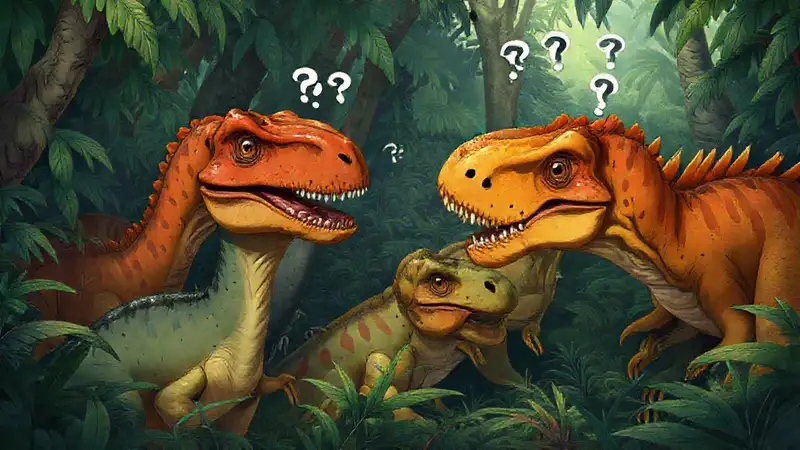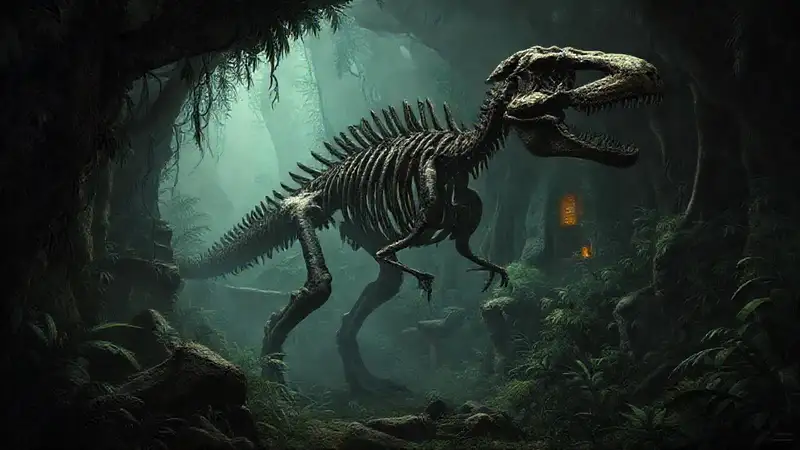The image of dinosaurs as solitary, aggressive hunters has been largely challenged in recent decades. Paleontological discoveries are increasingly revealing complex social structures within dinosaur communities, suggesting behaviors far more akin to modern animals. Understanding how dinosaurs lived and interacted has moved beyond simplistic portrayals, demanding a nuanced approach that considers fossil evidence, biomechanics, and behavioral modelling. This shift in perspective isn’t just about fancying up the prehistoric world; it's about gaining a more complete picture of the evolutionary pressures and adaptations that shaped these incredible creatures.
For a long time, the focus on dinosaur fossilization was primarily on the individual animal – skeletal remains, tooth marks, footprints. However, the application of new analytical techniques, combined with the discovery of more complete fossil assemblages, now allows scientists to reconstruct social interactions, nest sites, and even potential parental care strategies. It's becoming clear that dinosaurs didn’t simply exist; they lived in dynamic, interconnected groups, exhibiting behaviours that hint at sophisticated social systems.
Fossil Evidence of Nesting and Parental Care
The discovery of numerous dinosaur nests and associated juvenile fossils provides compelling evidence of parental care. Specifically, the nesting sites found in China, containing the remains of Oviraptor and other oviraptorosaurs, demonstrate clear indications of adult dinosaurs guarding nests, protecting eggs from predators, and even feeding their hatchlings. The preserved postures of adults near nests – often with their arms raised as if shielding the young – are incredibly powerful visual representations of protective behavior.
Furthermore, the association of juvenile remains with adult individuals, particularly in the same nesting area, strongly suggests that young dinosaurs were actively cared for by their parents. This is not just limited to oviraptorosaurs; evidence of juvenile Triceratops and Parasaurolophus have been found near adult skeletons, suggesting similar protective relationships. The sheer number of juvenile fossils recovered from these nesting sites demonstrate the importance of family units and protection within these dinosaur societies.
The taphonomy of these nests—how they were preserved—also provides important clues. The location of nests often near water sources and sheltered areas points to intentional selection of safe locations, again highlighting the importance of safety for the young and adult dinosaurs. This accumulation of supporting evidence drastically re-evaluates our understanding of dinosaur parenting.
Trackway Analysis and Group Dynamics
Detailed analysis of dinosaur trackways—the patterns of footprints—provides a remarkable window into their movement patterns and social interactions. Studies of Iguanodon trackways, for example, have revealed linear arrangements of footprints, suggesting that these dinosaurs moved in herds or flocks, potentially for foraging or predator avoidance.
These trackways aren’t just about movement; they also indicate the size and spacing of the groups. The consistent spacing between footprints suggests a degree of social organization and potentially, communication signals. The subtle variations in trackway patterns may even indicate different behavioral states – a relaxed stroll versus a hurried escape. Sophisticated computer modeling is now being used to simulate dinosaur movement, further refining our understanding of their social behaviour based on the available trackway data.
Importantly, the discovery of overlapping trackways and instances of individuals closely following others suggests that these dinosaurs weren’t just moving in a line. Instead, they likely engaged in complex social dynamics, including flanking and protecting individuals within the group, further cementing the idea of established social hierarchies and interactions.
Biomechanical Evidence & Cooperative Behavior

Advances in biomechanics, particularly the study of muscle attachments and skeletal structure, are revealing potential mechanisms for cooperation within dinosaur groups. For instance, the robust forelimbs of some hadrosaurs (duck-billed dinosaurs) have been linked to behaviors like assisting in raising young or maneuvering together in dense environments.
Specifically, the shape of the shoulder girdle in Parasaurolophus is thought to have provided stability and support, allowing them to brace themselves against predators or to aid in moving heavy nests. Similarly, the powerful leg muscles of Iguanodon may have facilitated collaborative digging or foraging. These biomechanical adaptations suggest that dinosaurs weren’t simply built for individual locomotion; they were designed to work together.
These biomechanical insights are incredibly important because they provide a physical basis for the observed social behaviors. They suggest that dinosaurs weren’t just acting socially, but were actually equipped physically to engage in cooperative activities. It’s a crucial link between observation and understanding of dinosaur sociality.
Evidence of Altruism – Limited but Present
While definitively proving altruistic behaviors in dinosaurs is extremely challenging, there's growing evidence of behaviors that appear to benefit other individuals at a cost to themselves. The guarding of nests and the protection of juveniles clearly demonstrate a willingness to sacrifice resources and risk for the benefit of offspring.
The cooperative feeding behaviors hinted at by biomechanical analysis suggest a sharing of resources within groups, indicating a level of social bonding and reciprocal benefit. Moreover, some researchers suggest that increased vigilance in group settings – where individuals are more aware of potential threats – could be considered a form of altruistic behavior, as it benefits the entire group.
However, it is important to recognize that these behaviors likely had strong genetic components. It's possible that parental care and cooperative behaviors were largely driven by instinctive tendencies, rather than conscious altruism as we understand it in mammals. Nevertheless, the weight of evidence points towards a degree of prosocial behavior within dinosaur communities.
Conclusion
The evidence surrounding dinosaur social structures is transforming our understanding of these extinct creatures. Initially viewed as isolated and aggressive, dinosaurs are now increasingly recognized as animals that lived in complex, organized groups and engaged in a range of social behaviors – from parental care to cooperative foraging. The shift in perspective is driven by a convergence of paleontological discoveries, biomechanical analysis, and advanced computational modelling.
Ultimately, the study of dinosaur sociality pushes the boundaries of our appreciation for the diversity and sophistication of prehistoric life. While we may never fully replicate the intricacies of these ancient societies, the ongoing research promises to unveil even more fascinating insights into the lives of these magnificent animals, proving that dinosaurs were far more than just giant reptiles; they were complex social beings.






Deja una respuesta